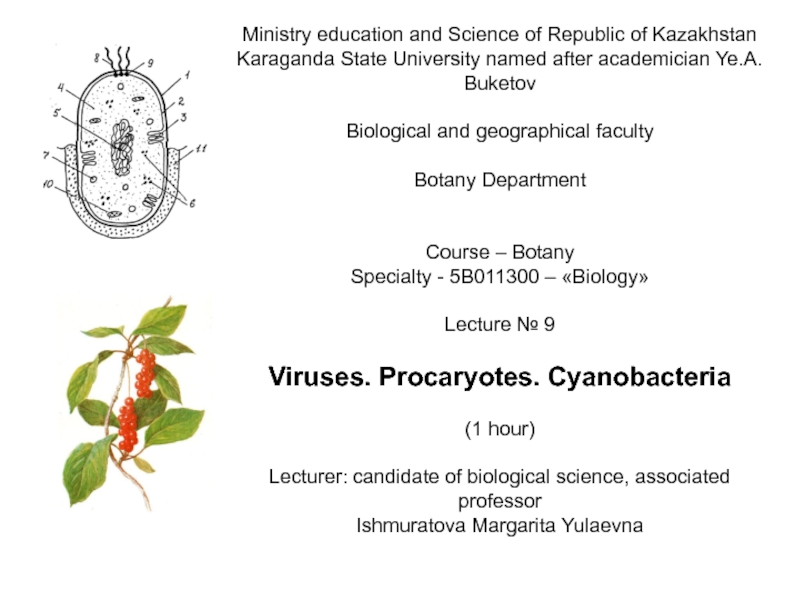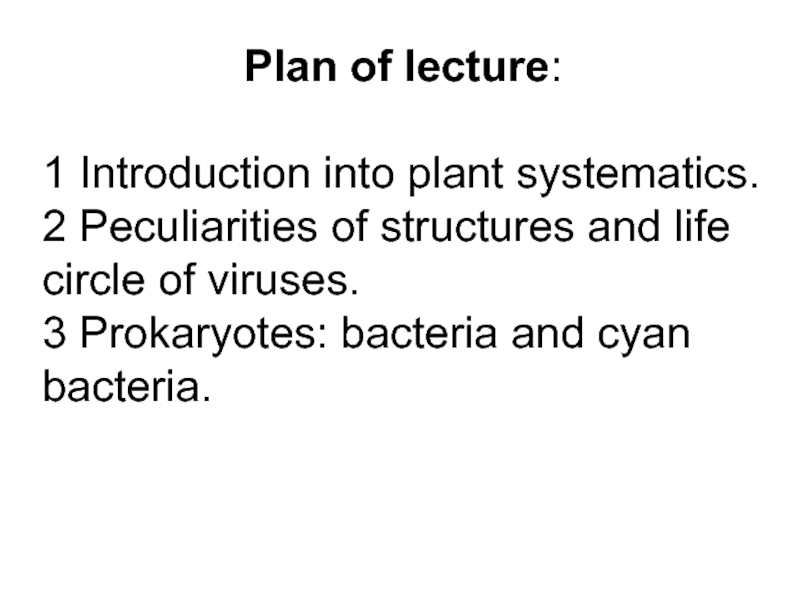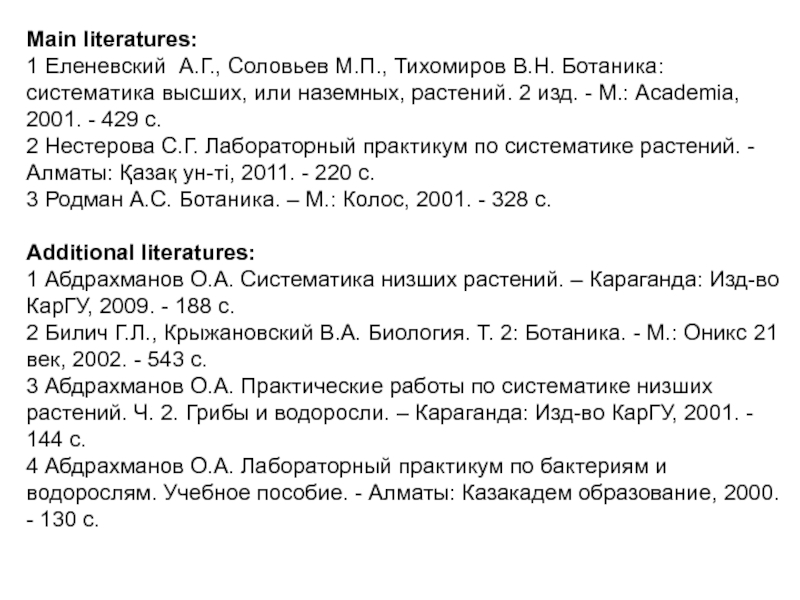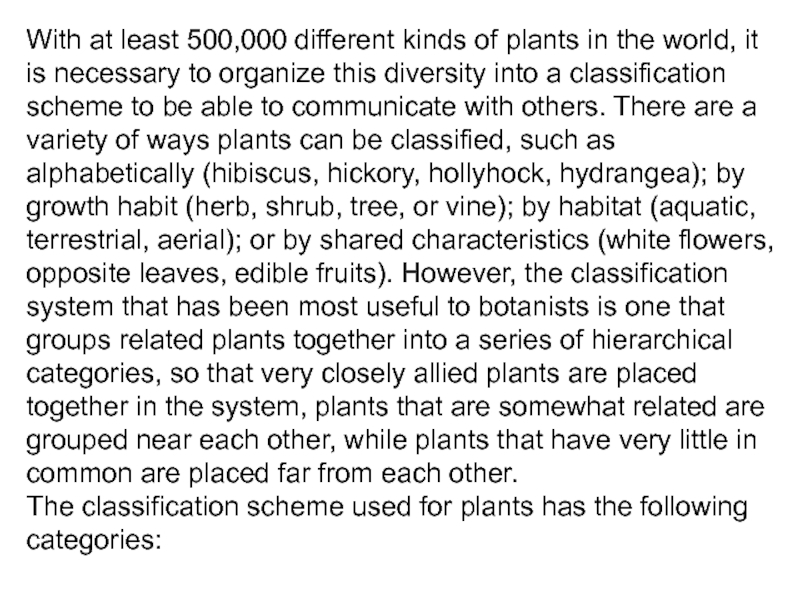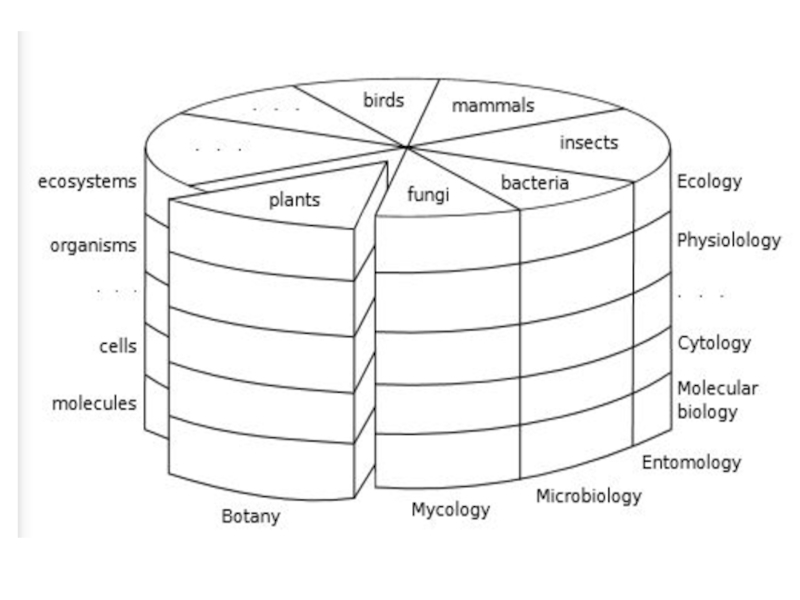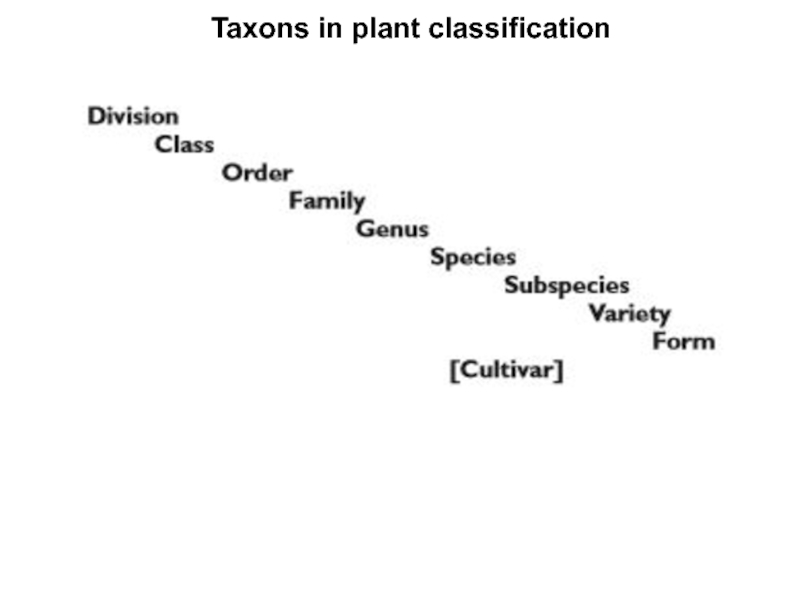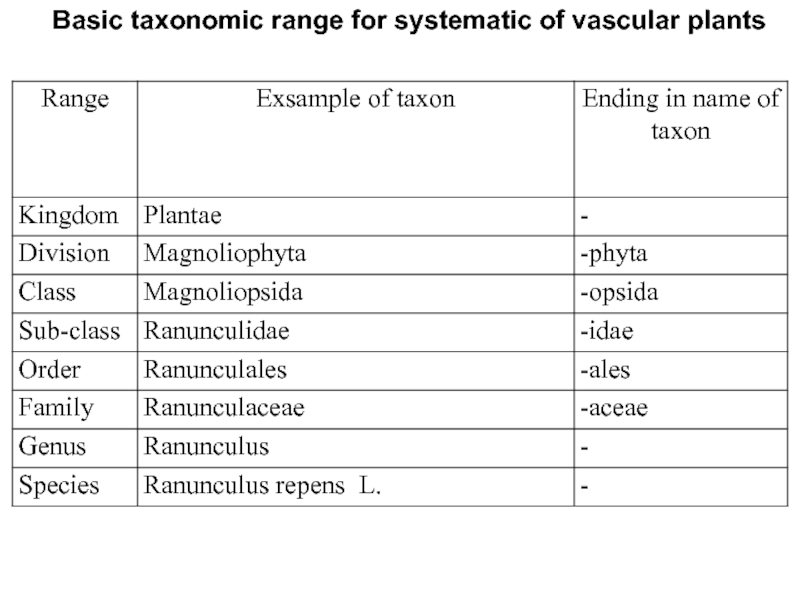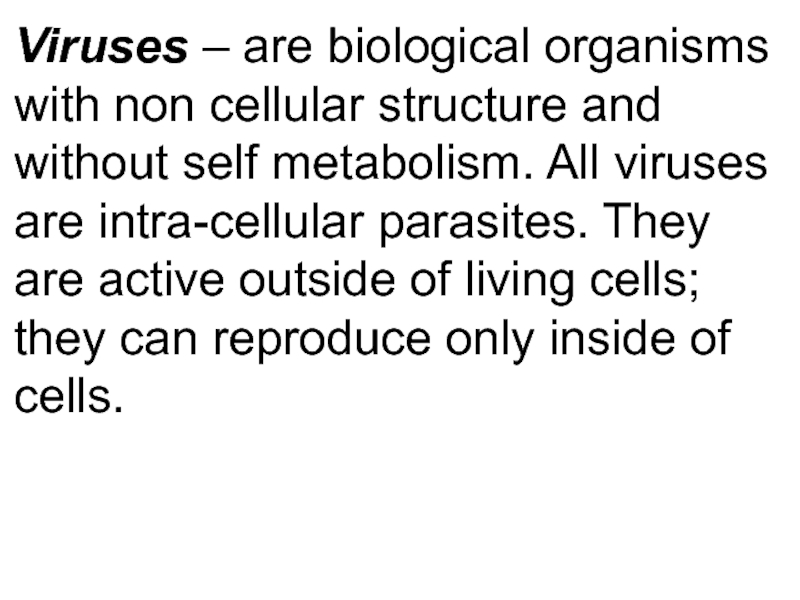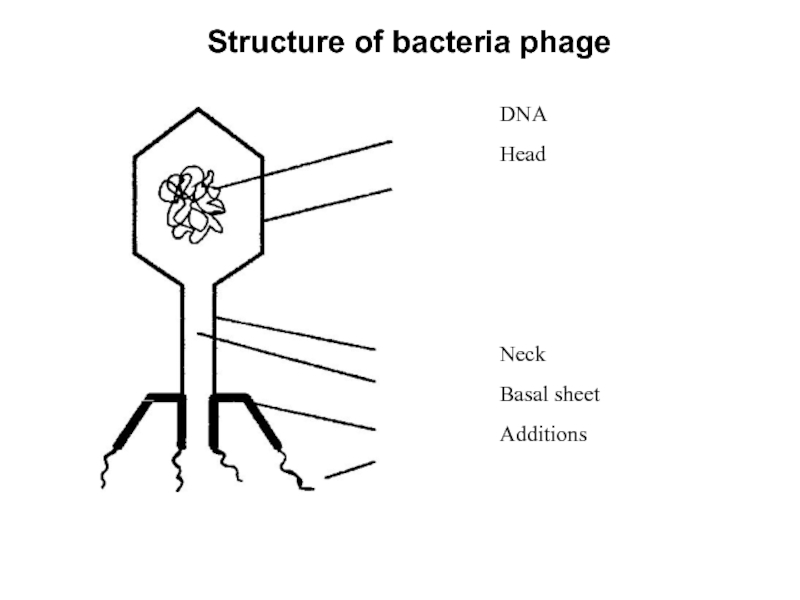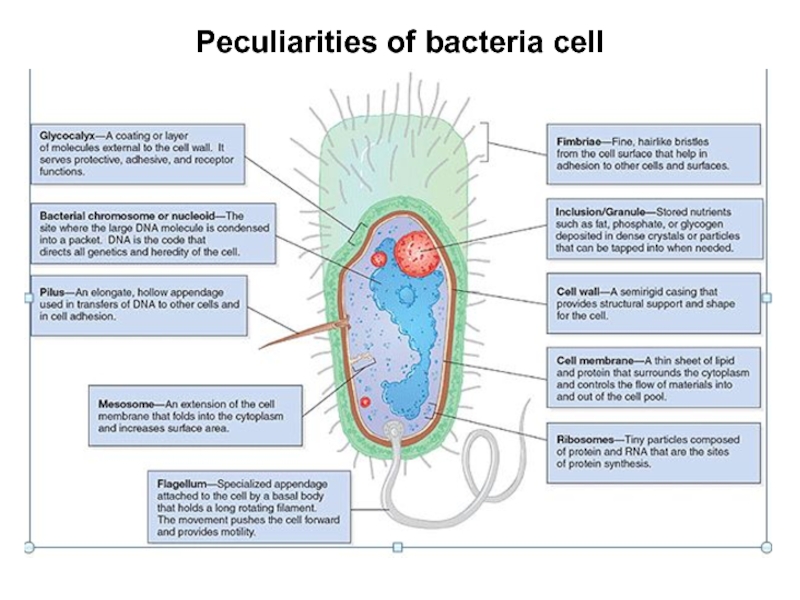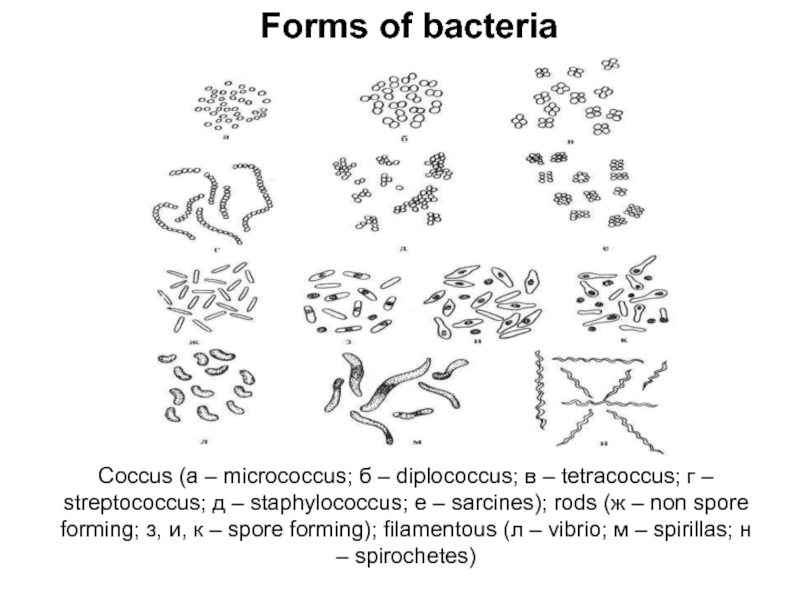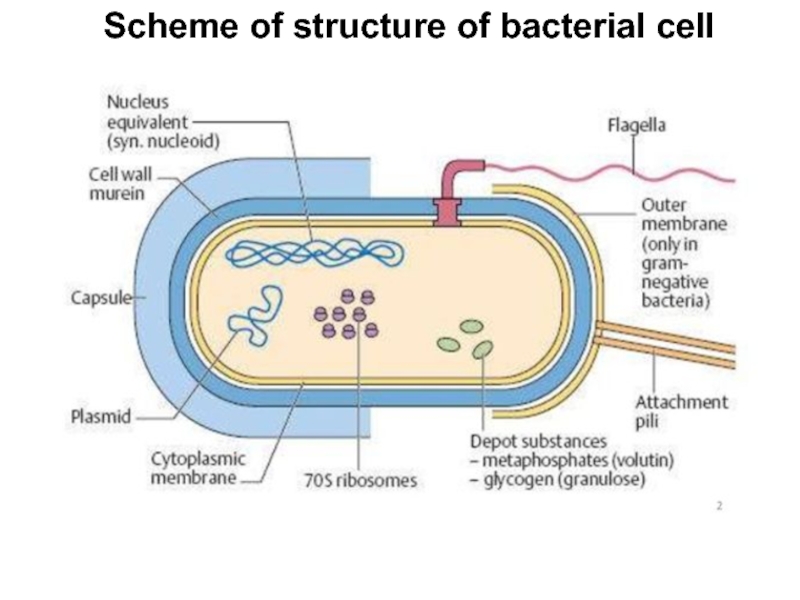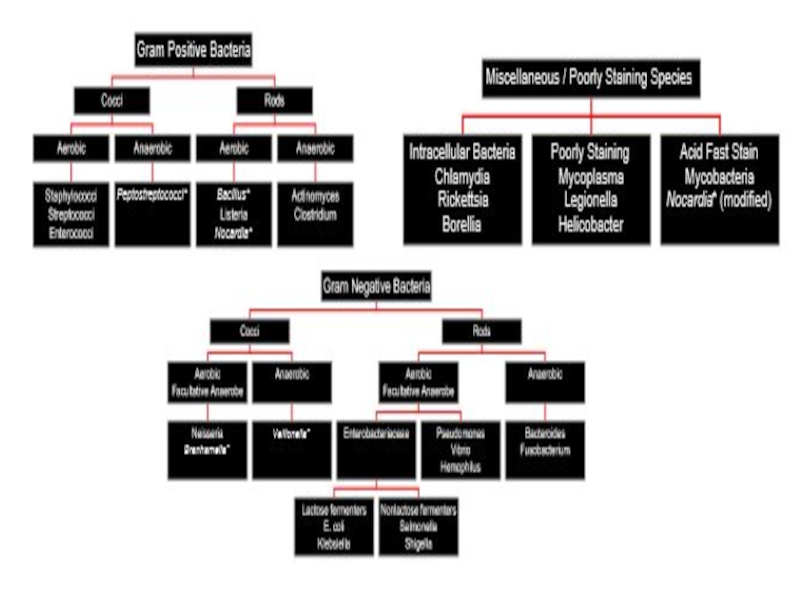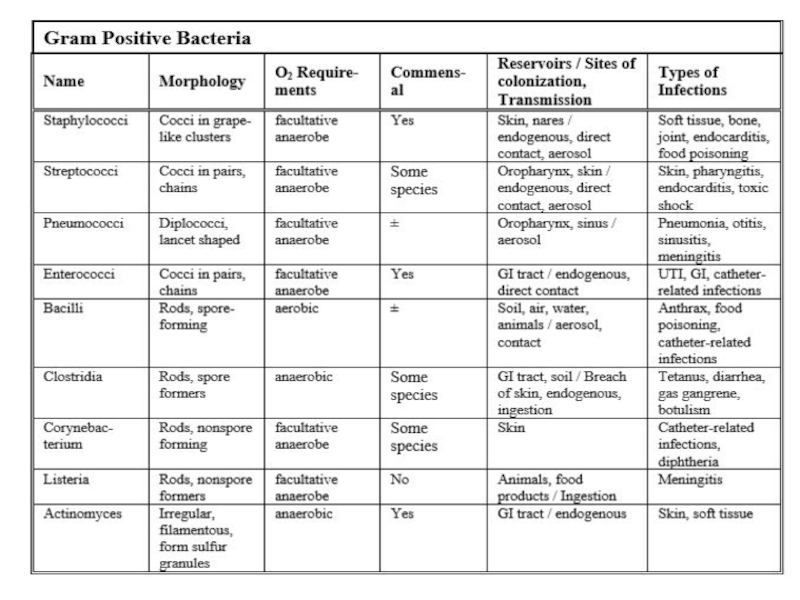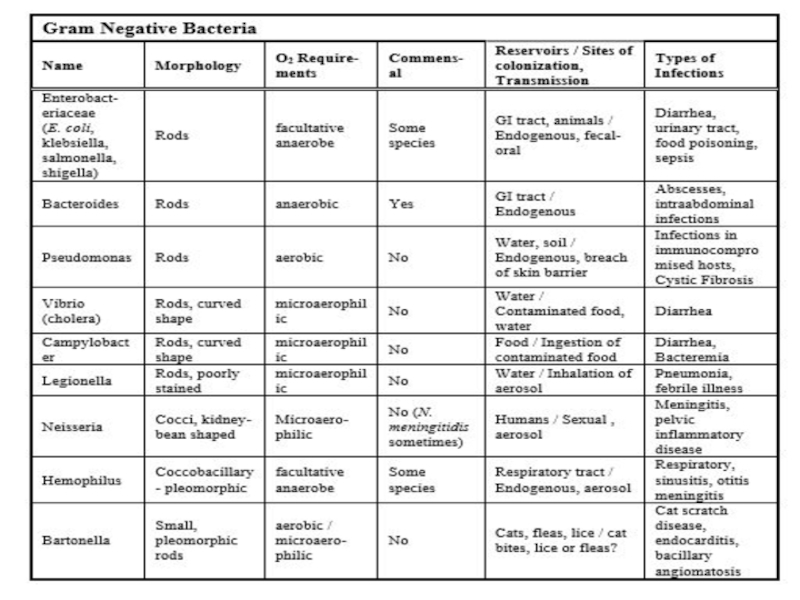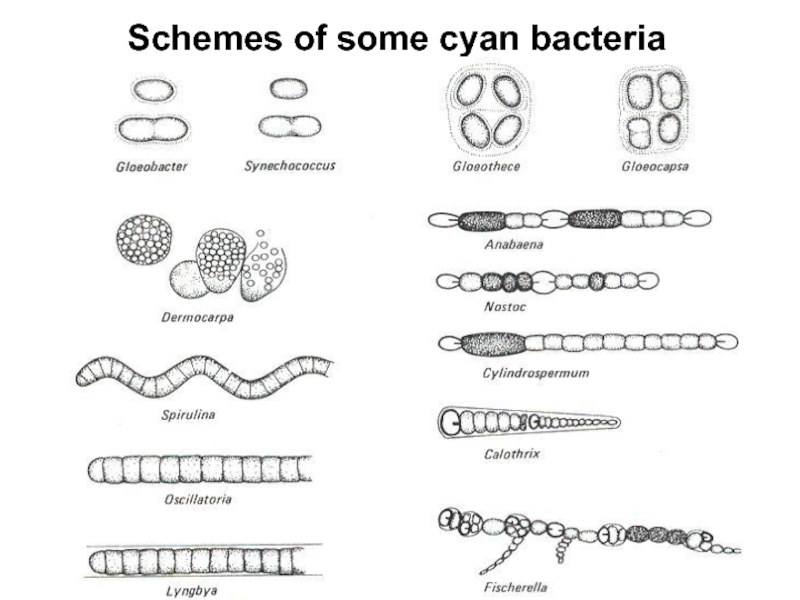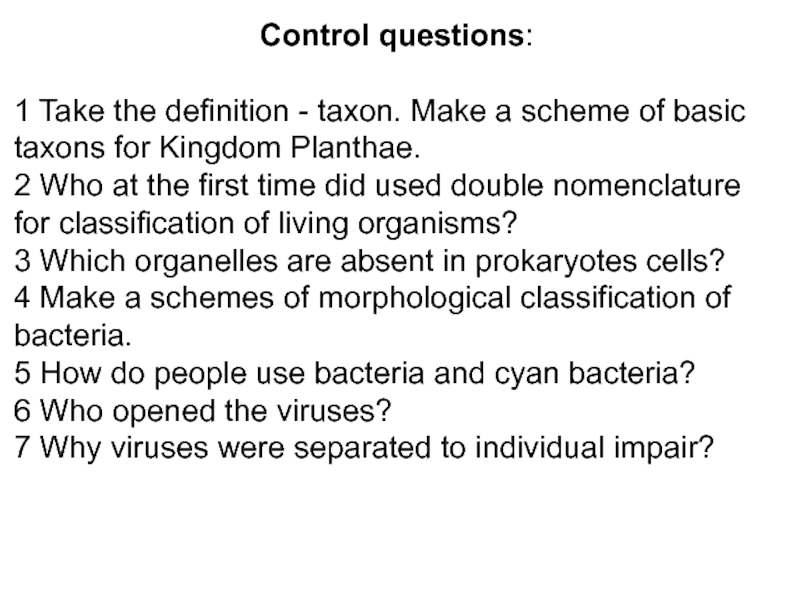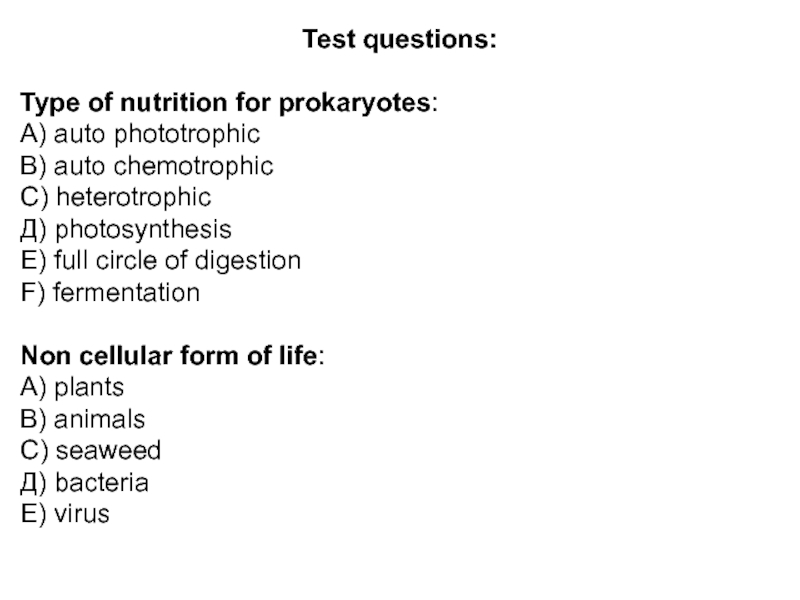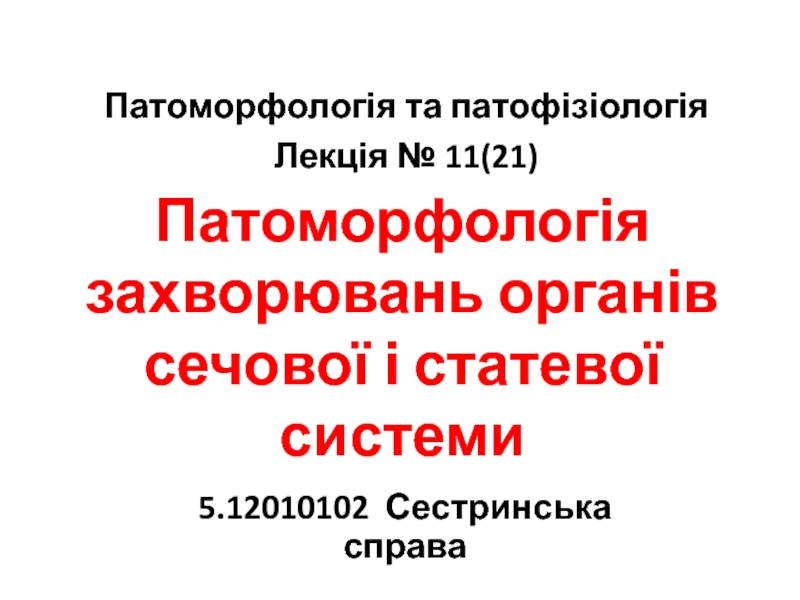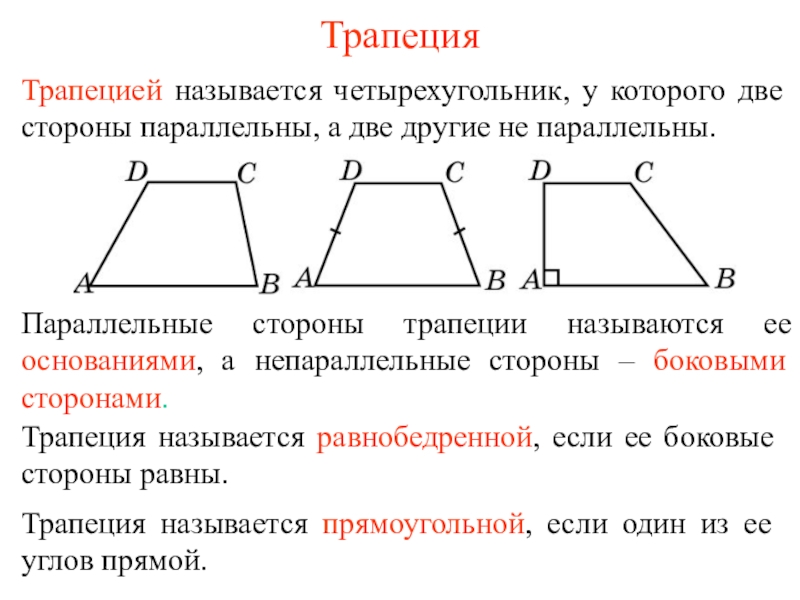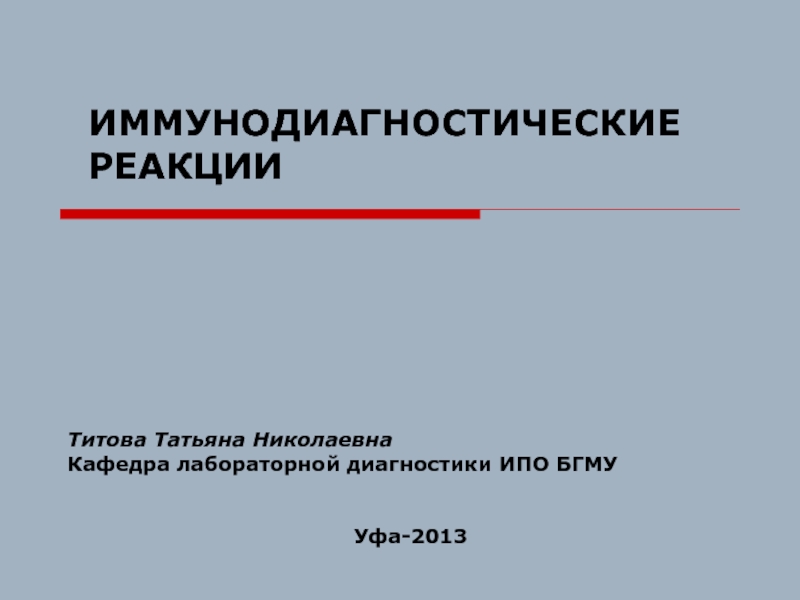Слайд 1Ministry education and Science of Republic of Kazakhstan
Karaganda State University
named after academician Ye.A. Buketov
Biological and geographical faculty
Botany Department
Course – Botany
Specialty - 5В011300 – «Biology»
Lecture № 9
Viruses. Procaryotes. Cyanobacteria
(1 hour)
Lecturer: candidate of biological science, associated professor
Ishmuratova Margarita Yulaevna
Слайд 2Plan of lecture:
1 Introduction into plant systematics.
2 Peculiarities of structures
and life circle of viruses.
3 Prokaryotes: bacteria and cyan bacteria.
Слайд 3Main literatures:
1 Еленевский А.Г., Соловьев М.П., Тихомиров В.Н. Ботаника:
систематика высших, или наземных, растений. 2 изд. - М.: Academіa,
2001. - 429 с.
2 Нестерова С.Г. Лабораторный практикум по систематике растений. - Алматы: Қазақ ун-ті, 2011. - 220 с.
3 Родман А.С. Ботаника. – М.: Колос, 2001. - 328 с.
Additional literatures:
1 Абдрахманов О.А. Систематика низших растений. – Караганда: Изд-во КарГУ, 2009. - 188 с.
2 Билич Г.Л., Крыжановский В.А. Биология. Т. 2: Ботаника. - М.: Оникс 21 век, 2002. - 543 с.
3 Абдрахманов О.А. Практические работы по систематике низших растений. Ч. 2. Грибы и водоросли. – Караганда: Изд-во КарГУ, 2001. - 144 с.
4 Абдрахманов О.А. Лабораторный практикум по бактериям и водорослям. Учебное пособие. - Алматы: Казакадем образование, 2000. - 130 с.
Слайд 4With at least 500,000 different kinds of plants in the
world, it is necessary to organize this diversity into a
classification scheme to be able to communicate with others. There are a variety of ways plants can be classified, such as alphabetically (hibiscus, hickory, hollyhock, hydrangea); by growth habit (herb, shrub, tree, or vine); by habitat (aquatic, terrestrial, aerial); or by shared characteristics (white flowers, opposite leaves, edible fruits). However, the classification system that has been most useful to botanists is one that groups related plants together into a series of hierarchical categories, so that very closely allied plants are placed together in the system, plants that are somewhat related are grouped near each other, while plants that have very little in common are placed far from each other.
The classification scheme used for plants has the following categories:
Слайд 6Taxons in plant classification
Слайд 7Impair Noncellulata. Only one kingdom - Virae.
Impair Сellulata.
1. Sub-impair Procaryota
– cells without nucleus. They separated into 2 kingdom:
а)
Kingdom Archaebacteria;
б) Kingdom Eubacteria.
2. Sub-impair Eucaryota – cells with nucleus:
а) Kingdom Protoctista; include seaweeds and mushroom-shaped organisms.
б) Kingdom Animalia.
в) Kingdom Fungi (Mycota);
г) Kingdom Plantae.
Слайд 8Basic taxonomic range for systematic of vascular plants
Слайд 9Viruses – are biological organisms with non cellular structure and
without self metabolism. All viruses are intra-cellular parasites. They are
active outside of living cells; they can reproduce only inside of cells.
Слайд 12Prokaryotes are distinguished from eukaryotes by their smaller size (0.210µm),
their lack of internal organelles (e.g., mitochondria), the presence of
a cell wall and their cell division by binary fission rather than mitosis. They lack introns, are not capable of endo/exocytosis and have single-stranded circular DNA rather than multiple discrete chromosomes.
Bacteria share a number of common structures that are briefly described below.
Slime (extracellular polysaccharide): This is extracellular material, loosely associated with the bacteria, that is elaborated by some bacterial species that facilitates colonization of smooth, prosthetic surfaces such as intravascular catheters.
Capsule: This polysaccharide outer coating of the bacterial surface often plays a role in preventing phagocytosis of bacteria.
Peptidoglycan (cell wall) Provides bacterial shape and rigidity. The cell wall consists of alternating units of N-acetylglucosamine and N-acetylmuramic acid. The polysaccharide chains are cross-linked by a peptide bridge. It is a primary target of antimicrobial therapy – because it is specific to prokaryotes.
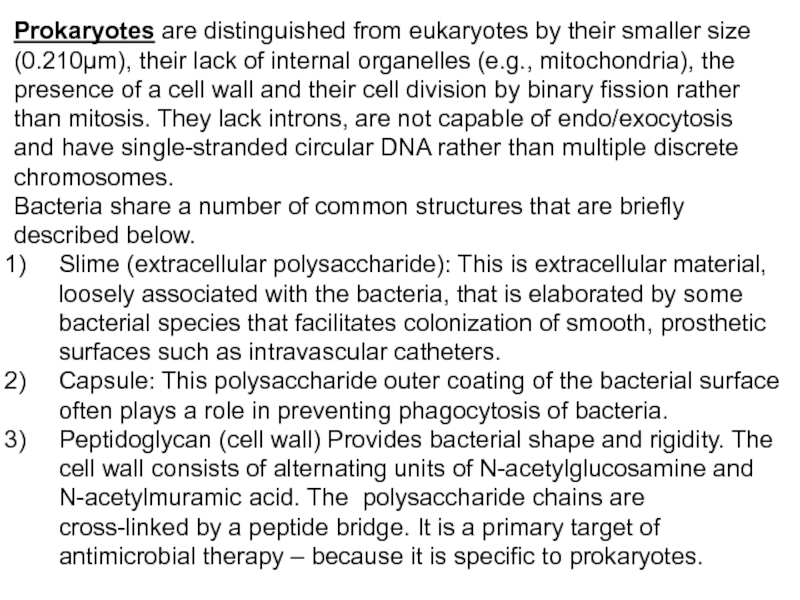
Слайд 13Forms of bacteria
Coccus (а – micrococcus; б – diplococcus;
в – tetracoccus; г – streptococcus; д – staphylococcus; е
– sarcines); rods (ж – non spore forming; з, и, к – spore forming); filamentous (л – vibrio; м – spirillas; н – spirochetes)
Слайд 14Scheme of structure of bacterial cell
Слайд 19Control questions:
1 Take the definition - taxon. Make a
scheme of basic taxons for Kingdom Planthae.
2 Who at the
first time did used double nomenclature for classification of living organisms?
3 Which organelles are absent in prokaryotes cells?
4 Make a schemes of morphological classification of bacteria.
5 How do people use bacteria and cyan bacteria?
6 Who opened the viruses?
7 Why viruses were separated to individual impair?
Слайд 20Test questions:
Type of nutrition for prokaryotes:
А) auto phototrophic
В) auto
chemotrophic
С) heterotrophic
Д) photosynthesis
Е) full circle of digestion
F) fermentation
Non cellular form
of life:
А) plants
В) animals
С) seaweed
Д) bacteria
Е) virus
